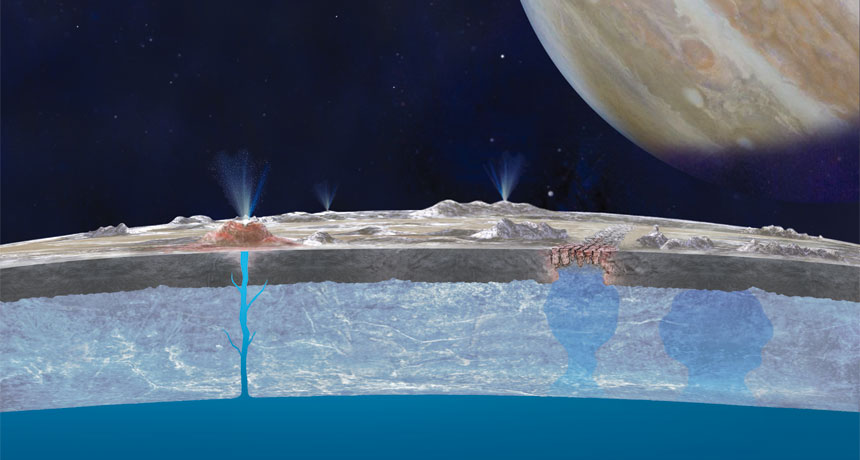
Europa, Jupiter’s moon has always been a prime candidate for alien search and habitat in our solar system. Here’s more on the newest breakthrough in the search for other lifeforms.
Alien search on Jupiter’s moon

Europa, the smallest of Jupiter‘s many moons has always been a fascination for man. First discovered by Galileo Galilei in 1610, it is the sixth closest moon to the planet out of almost 80 others. NASA’s Voyager spacecraft flew by the moon in the late 1970s. They reported strong evidence of liquid water ocean under the icy shell of the moon. Unfortunately, studying the samples is not easy. This is due to the thick and icy crust that is as thick as 10 to 15 miles.
While the presence of the icy and thick crust was making future space missions to the moon tricky, there is a breakthrough. According to a study published on Tuesday in Nature Communications, there is another way for obtaining samples of Europa’s deep waters. As per the researchers, the thickness and thermophysical structure is poorly constrained. Additionally, detailed dynamics and structural analysis are critical. This helps in “understanding both the fundamental geophysical processes and habitability of Europa”.
How can double ridges help in understanding Europa?
Researchers explain the analysis and discovery of a double ridge on Europa using an experimental setup in Northwest Greenland. “Double ridges are the most common surface feature on Europa and occur across every sector of the moon. But their formation is poorly understood, with current hypotheses providing competing and incomplete mechanisms for the development of their distinct morphology,” notes the study.
Using this helped in understanding that surface liquid water is spatially and temporally universal across the moon’s shell. Additionally, it suggests the moon’s ability to hold life. “Because it’s closer to the surface, where you get interesting chemicals from space, other moons, and the volcanoes of Io. There’s also a possibility that life has a shot if there are pockets of water in the shell. If the mechanism we see in Greenland is how these things happen on Europa, it suggests there’s water everywhere,” explained Dustin Schroeder. Schroeder is a geophysicist from Stanford University. Hence, they can provide clues to alien search missions and research.






